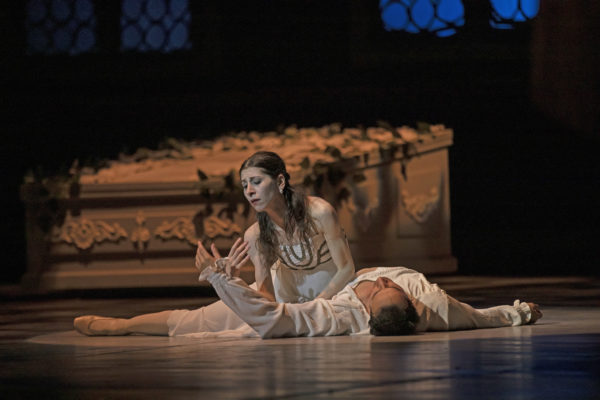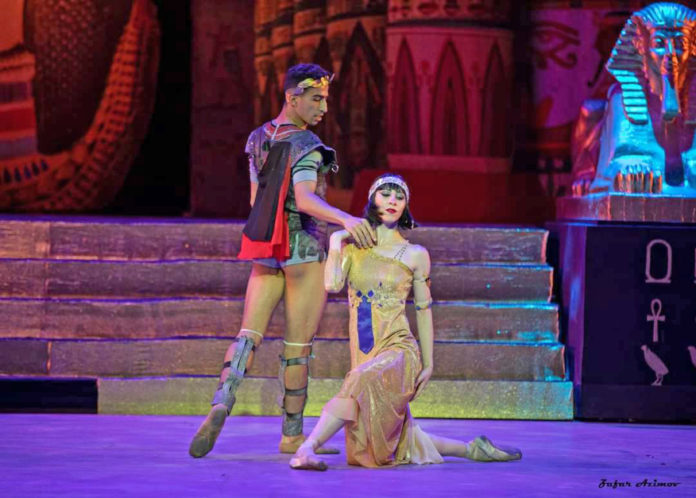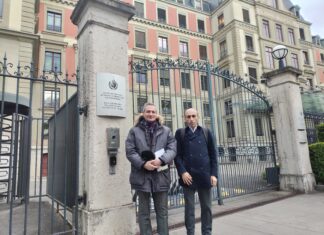CAIRO — During my trip to Egypt last November, I had a pleasant meeting with ballet dancer Mariam Karapetyan, who is the Prima Ballerina of the Cairo Opera Ballet Company. Born in Gyumri, Mariam graduated from the Yerevan State College of Dance in 2009. Since 2011, she has been performing leading roles in the Egyptian ballet (“Don Quixote,” “Sleeping Beauty,” “Swan Lake,” “Carmina Burana,” “Spartacus,” “Zorba,” “Bolero,” “Walpurgis Night,” “Fountain of Bakhchisarai,” “Coppelia,” “Prince Igor,” etc.).
Mariam has worked with eminent ballet masters Abdel Moneim Kamel, Jose Perez, René de Cárdenas, Valentin Bartes and others, and performed in ballets of internationally known ballet masters Renato Greco, Thierry Malandain, Lorka Massine. Since 2004, she has taught character dance at the Cairo Contemporary Dance Center for a while. Mariam performed with the Cairo Opera Ballet Company in different countries; in 2017 she participated in the gala of the South African International Ballet with duets.
From Gyumri to Cairo. How did this come about?
In 1991, the year of my birth, our family moved from Gyumri to Russia, then we returned to Armenia, as my mother did not want my sister and me attend school in Russia. In Yerevan, my father, Arshaluys (Ashik) Karapetyan, went to work at a choreographic school as a designer and maker of dance shoes. We are extremely grateful to the late director of the school, the legendary Tereza Grigoryan, because thanks to her, our family got out of the crisis of the ’90s, and it was she who accepted me to the ballet department. Everyone at school knew about my dad’s “Ashik’s workshop,” and they called me “Ashik’s boy” because I used to get into a lot of fights (laughs). I always fondly remember my late teacher, Lola Gyurjyan, with whom I studied until the seventh grade. Then I finished the class of Elvira Mnatsakanyan, one of our ballet stars. I fell in love with dance; after graduating from school I entered our opera theater, where I stayed for a while. Then I taught for two years at Maluntsyan Art School. During that time, I was depressed because I could not dance, so I started practicing with ballet teacher Hayk Avagyan. At the end of November 2010, I was going to apply for a job in the Tel Aviv ballet company for next January. I was with my sister in the Yerevan Grishko shop for dance clothes and shoes, when a large group of foreigners entered. It turned out they were dancers from Egypt. We did not know there is ballet in Egypt. My sister, being very sociable, asked one of the guys if they dance the Tanoura [the Sufi whirling dance]. The guy said, offended: “No, I am a ballet artist!” My sister proudly said that her sister is a ballerina. The Egyptian said they need girls and offered to apply for a job in their group. Three days later, one of the dancers, who is now my life partner and who had noticed me in the shop, accompanied me to my studio and filmed my dance. Then he showed the clip to their director, Erminia Kamel, who wanted to meet me. I auditioned in the gym of Ani Hotel, and she immediately offered me a contract for next January. But when we were leaving the hall, Erminia Kamel turned and asked: “Are you free now?” Having received a positive answer, she asked: “Can you join us now?” I agreed, but I had no idea that this “now” was to happen in six days. It was most difficult for my parents. They sent the contract in two days, and my ticket on the third day. That’s how I ended up in Egypt.

And are you happy?
Yes! There are no ideal places. But there is something that always keeps me going here. I am grateful to this country, to this theater for many things, especially for the repertoire: my experience here also had taught me many things as a person.










